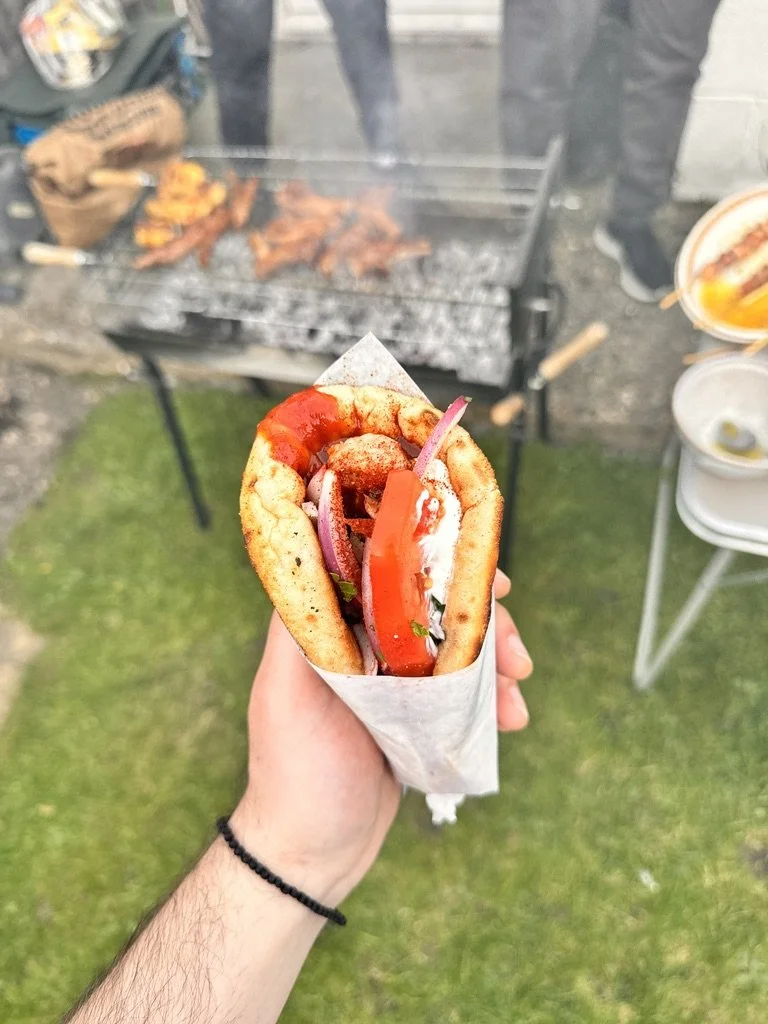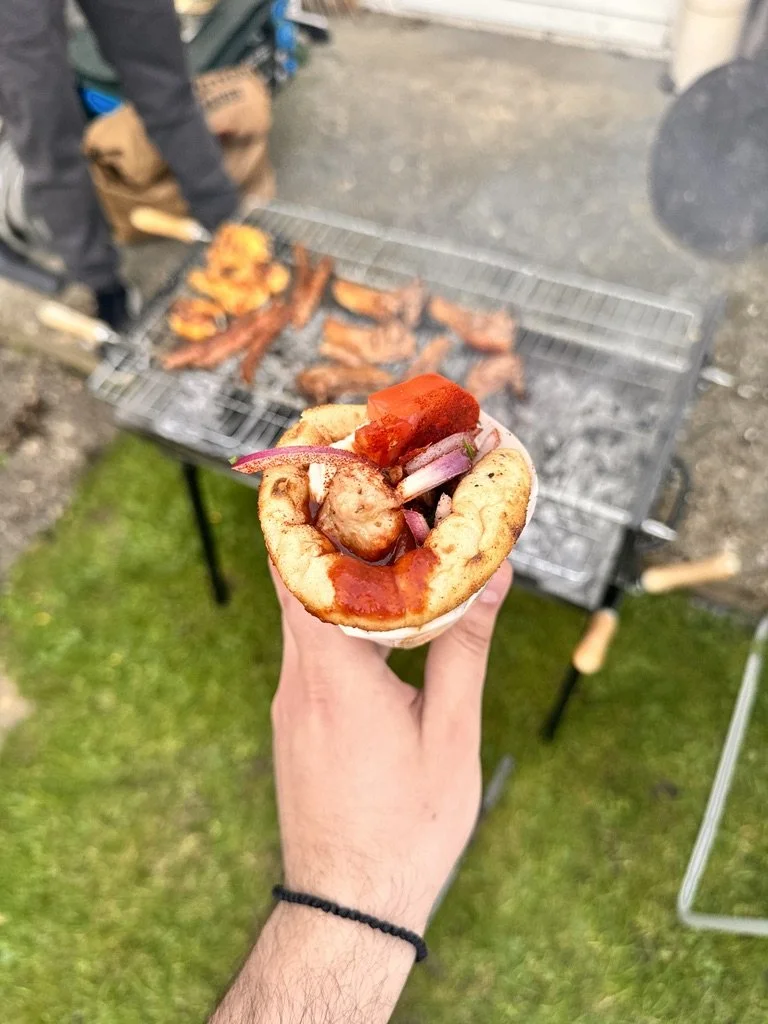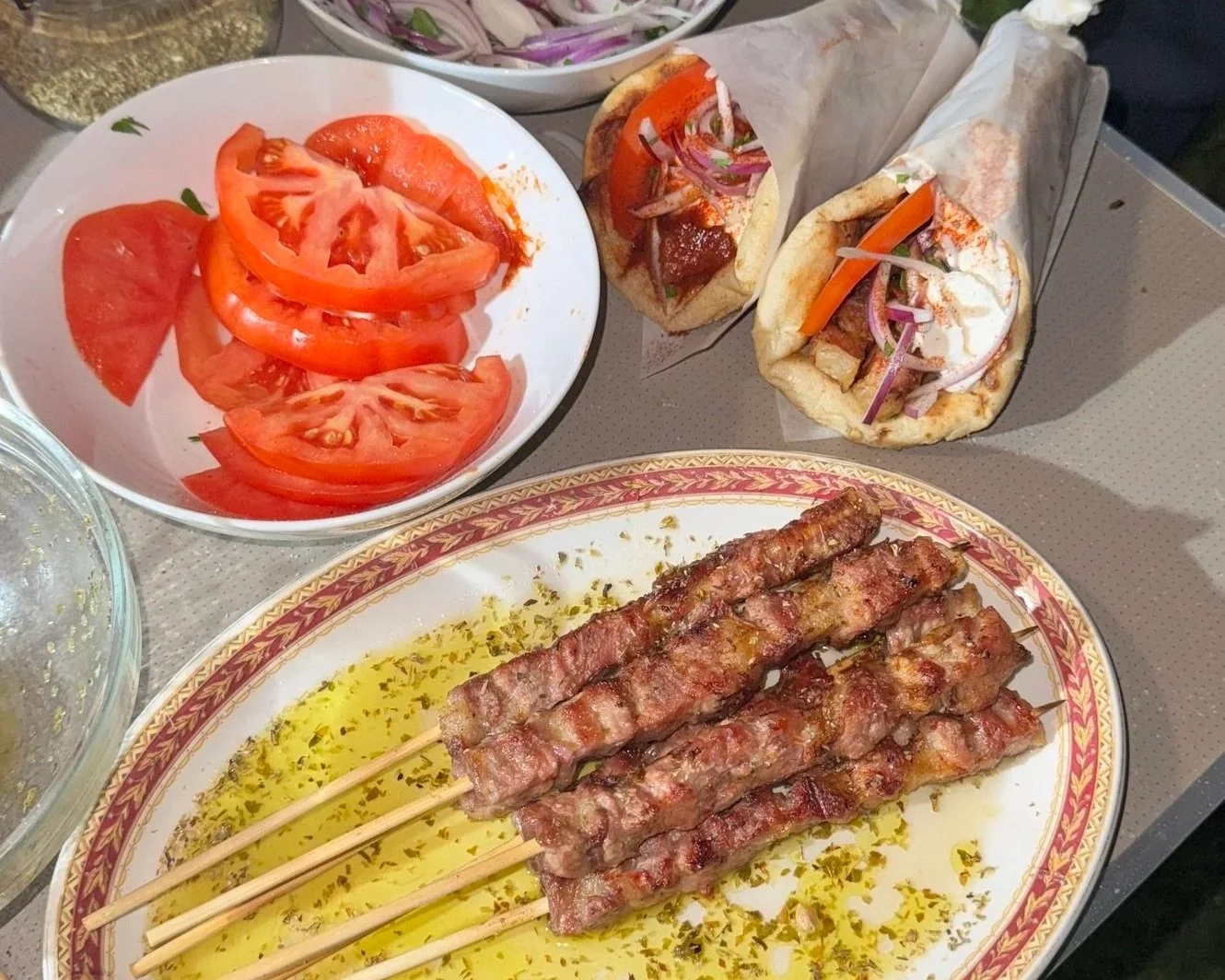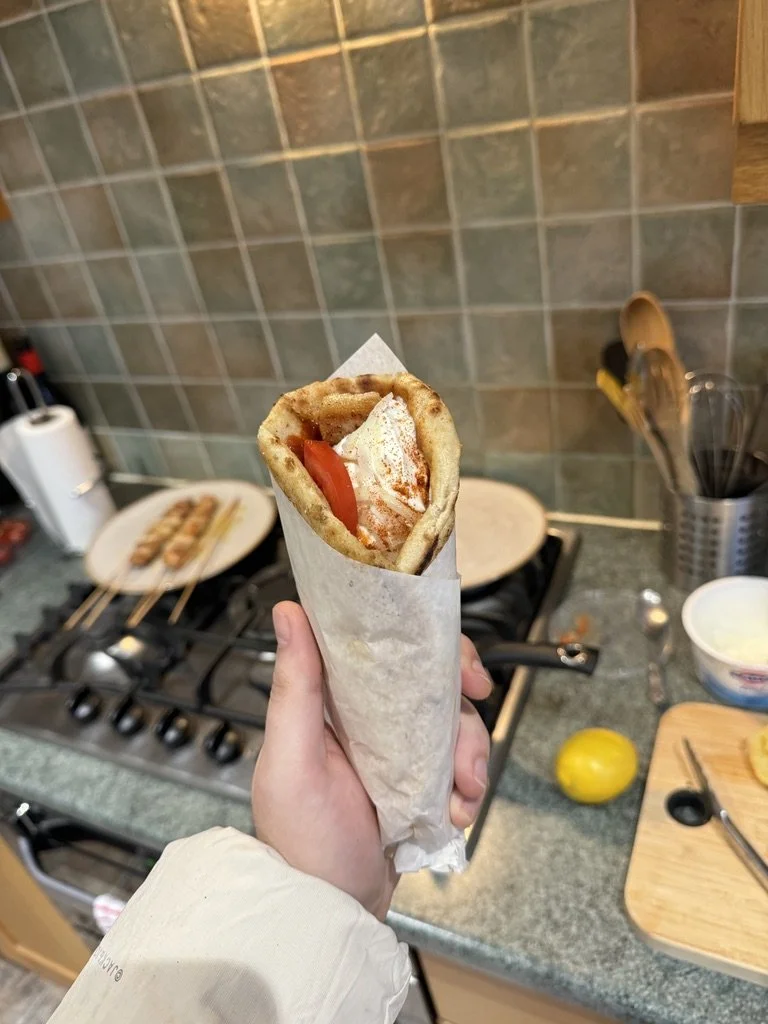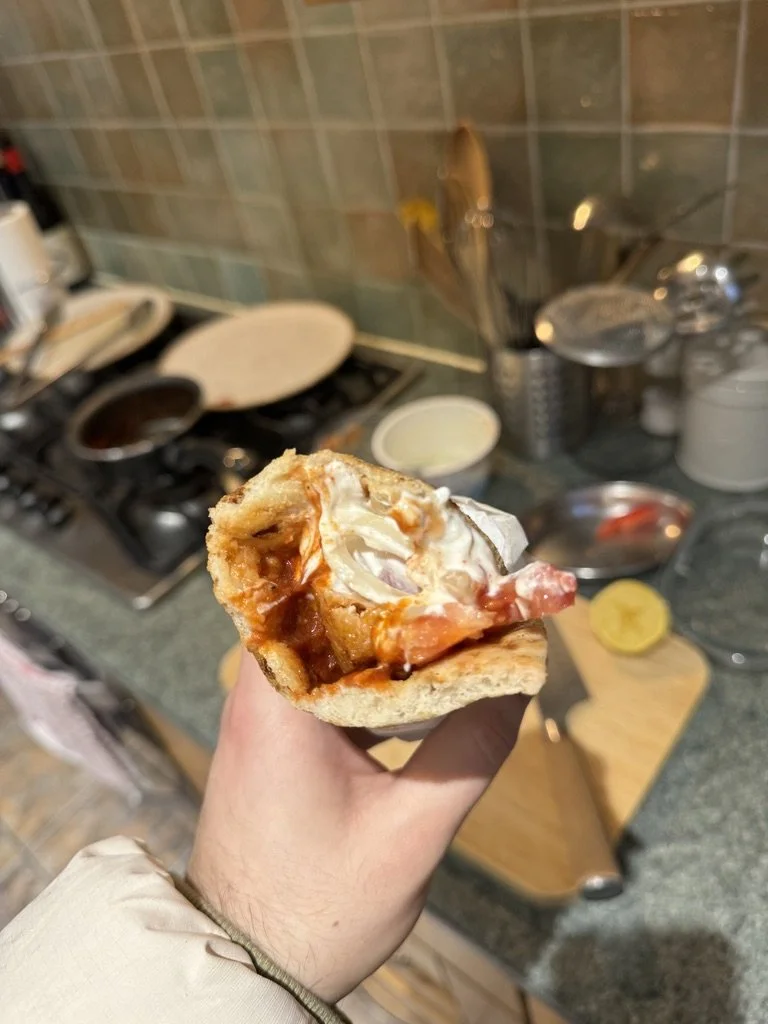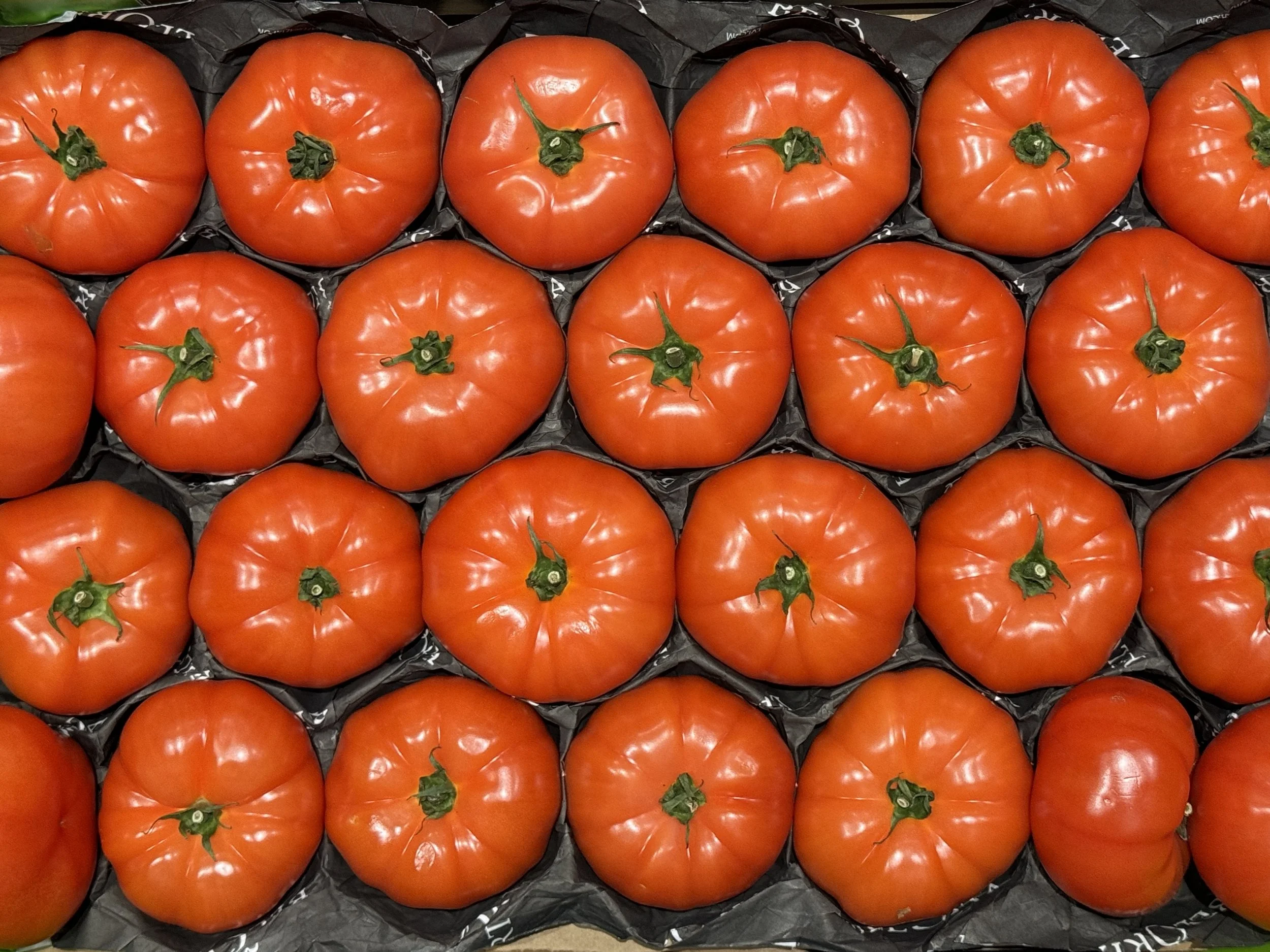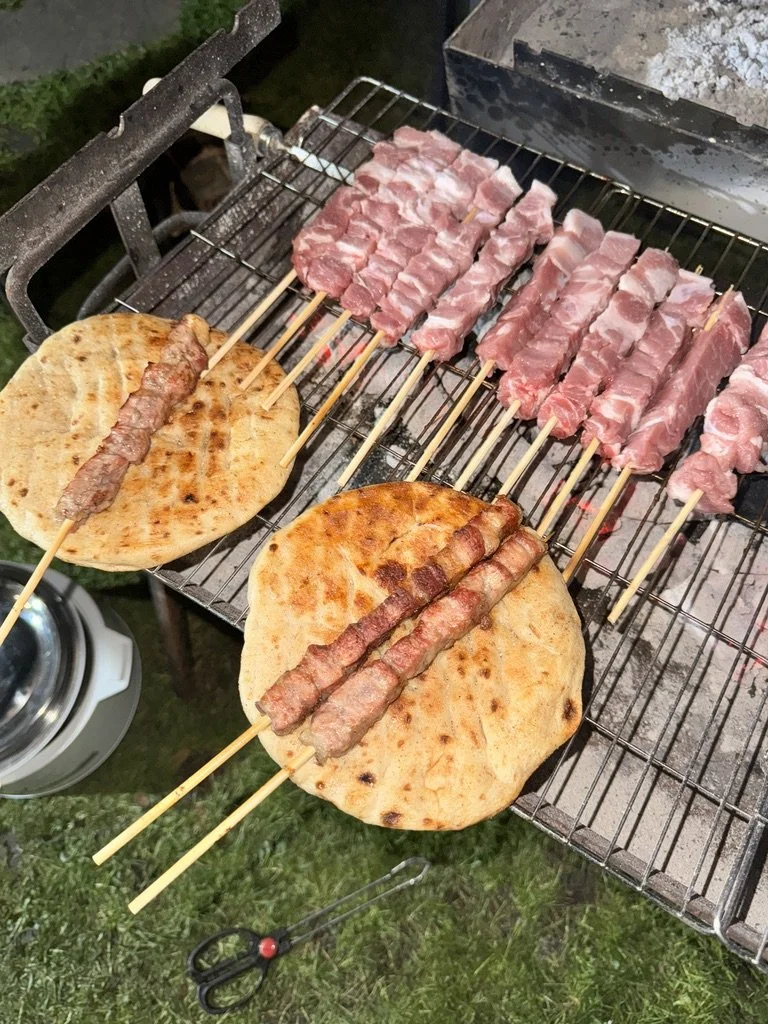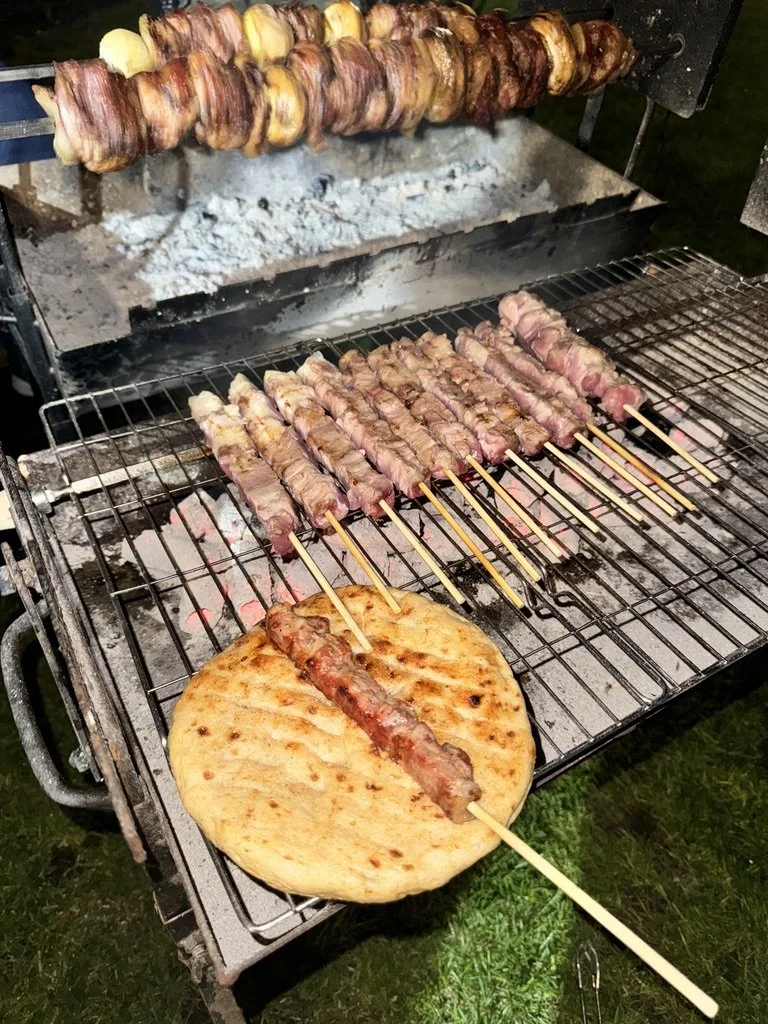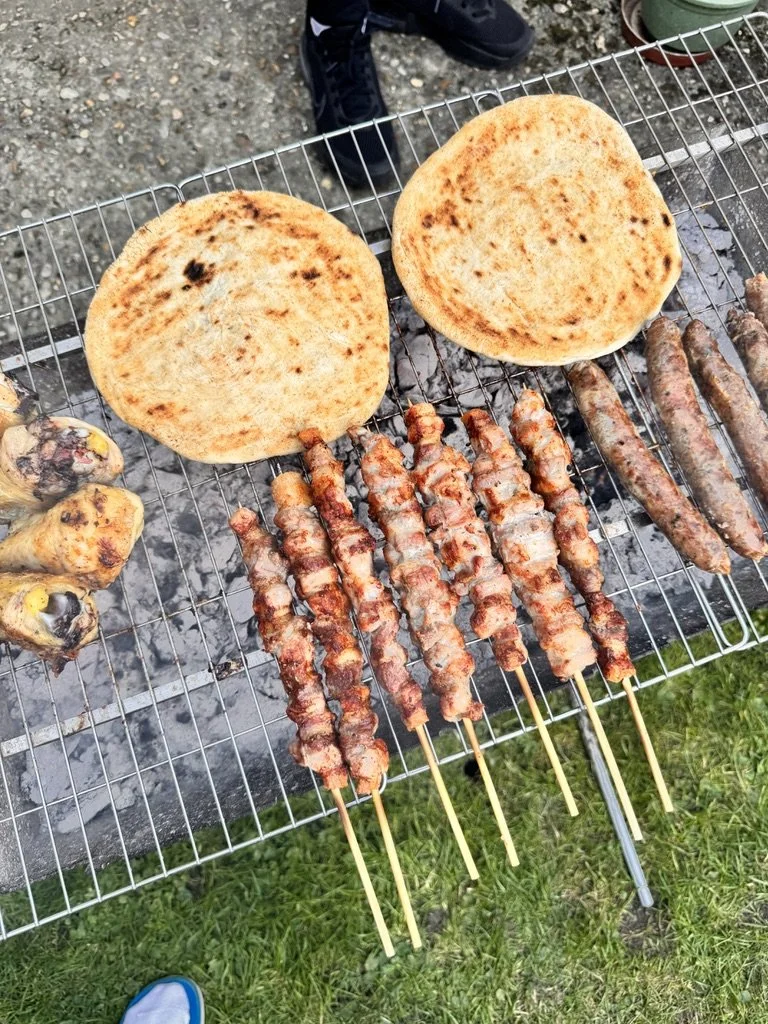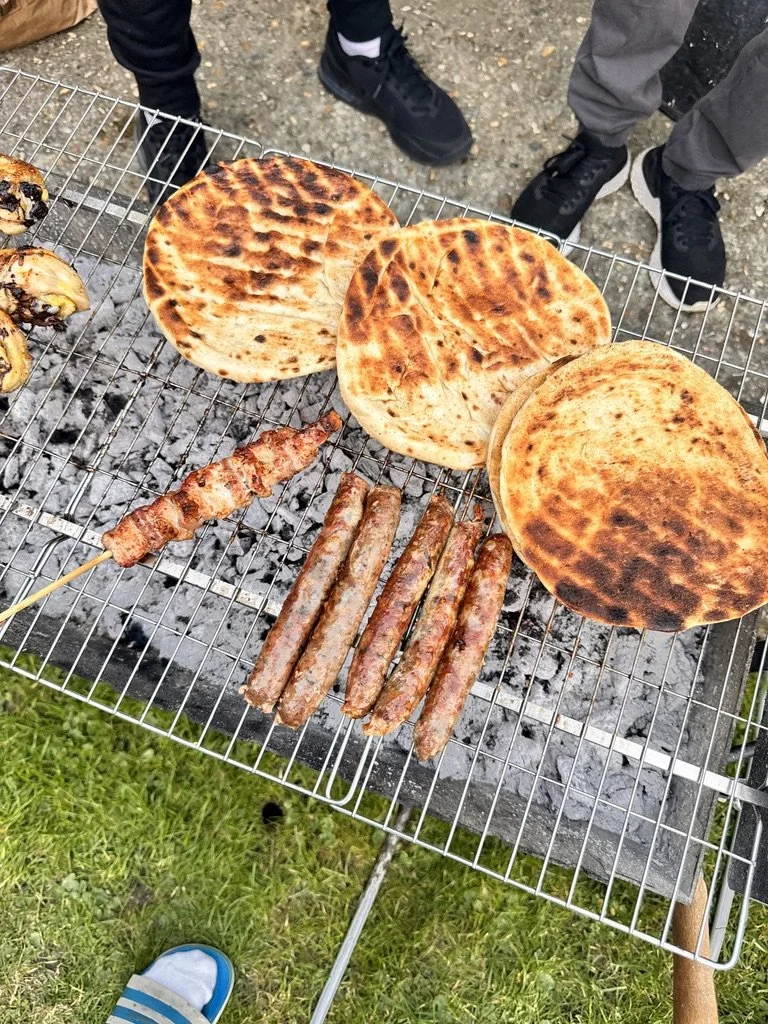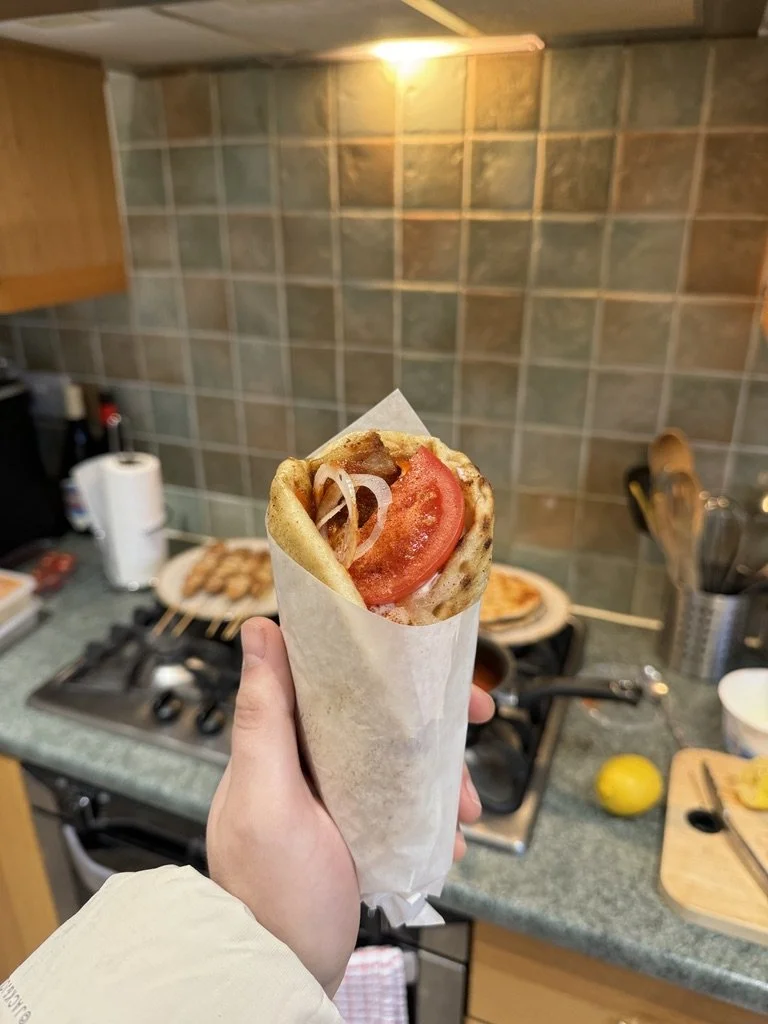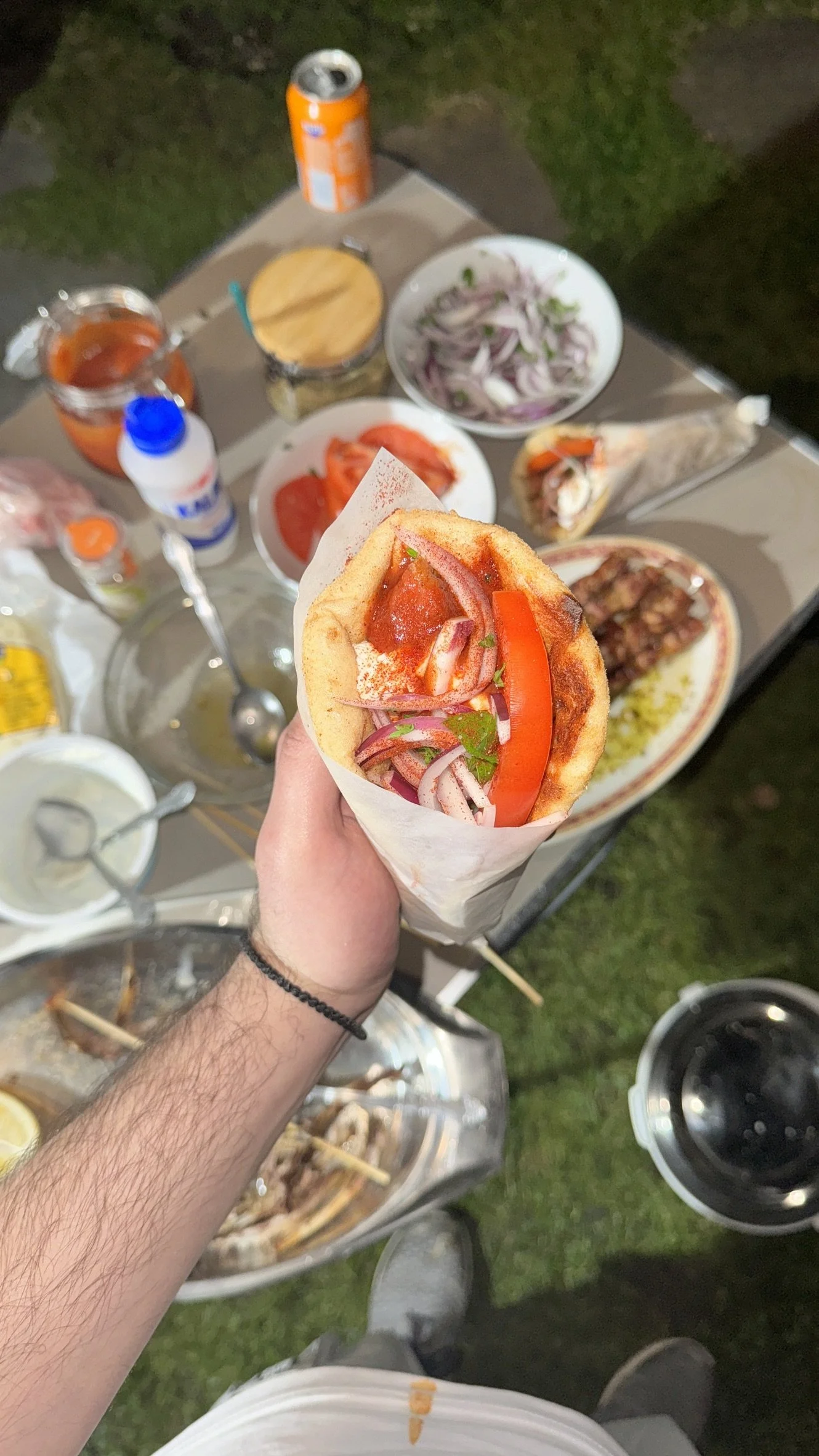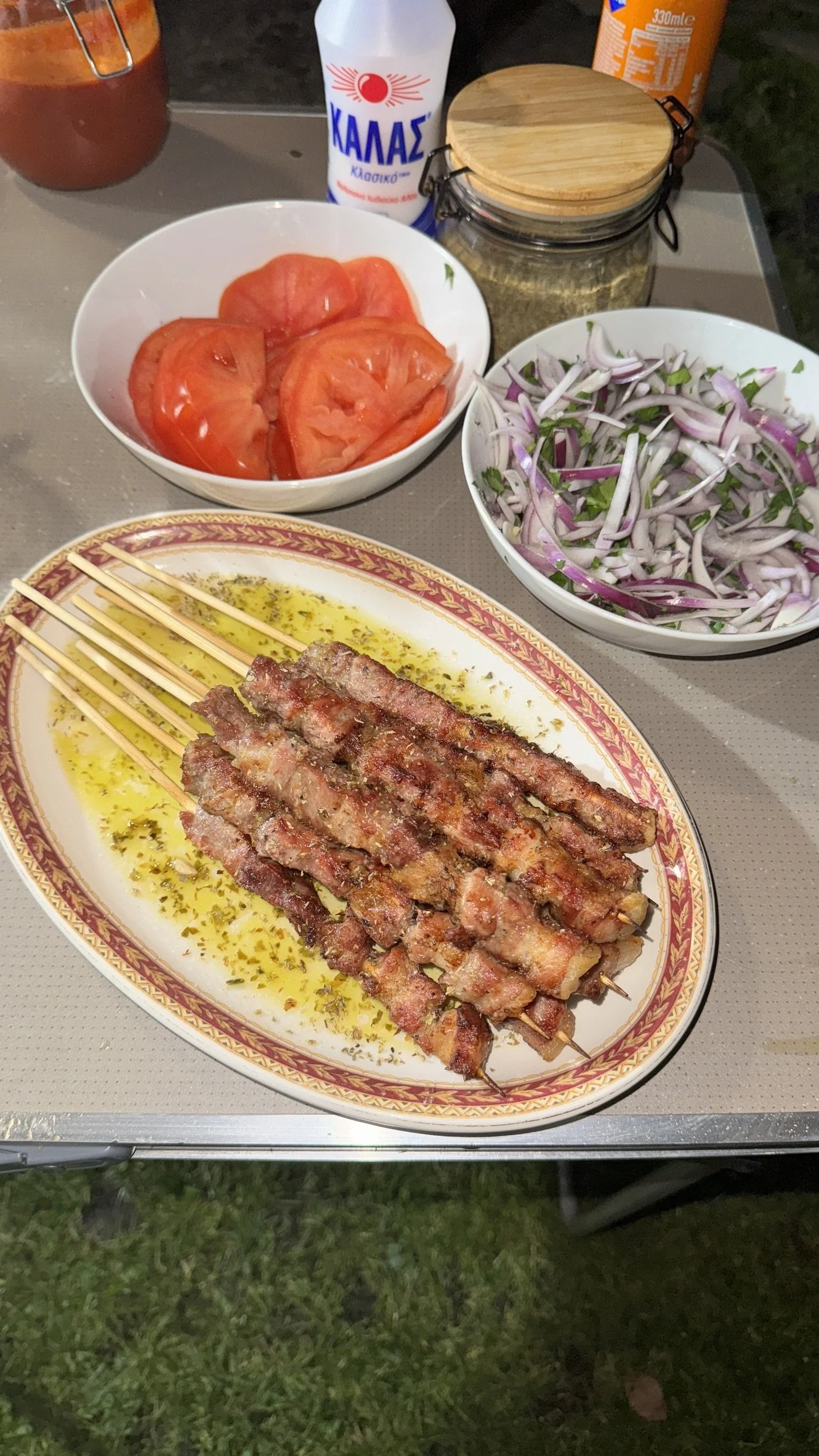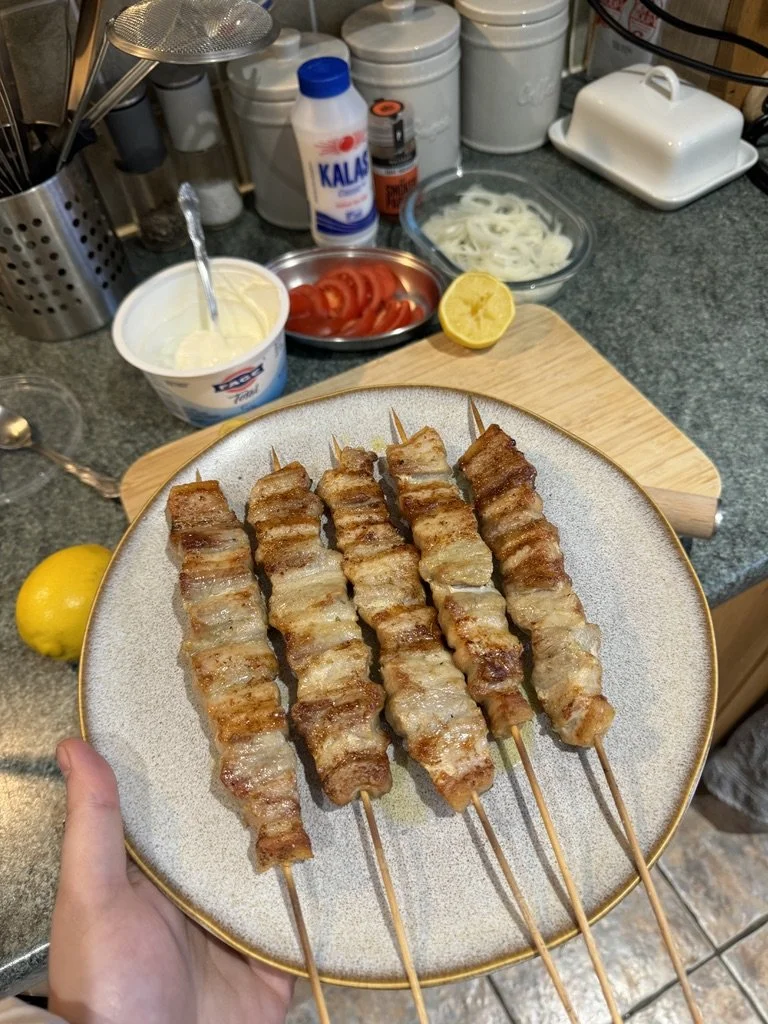Traditional Athenian souvlaki recipe with kalamaki: How to make souvlakia properly v.1
The most informed, in-detail, traditional and authentic recipes for souvlakia you’ll find anywhere.
How to make souvlakia properly: background
Souvlakia vary so much – between Greece and Cyprus, within Greece and Cyprus, across different regions and different souvlatzidika, as well as across acceptable definitions of the term ‘souvlaki’ – that it’s absolutely impossible to write one recipe for souvlakia.
When Athenians say souvlaki, they are (infamously) most likely referring to the pita wrap as a whole, not the (pork) skewer. Hence, one definition of souvlaki also encompasses gyros, bifteki, kebab, kontosouvli and a range of other meats that are traditionally served in a pita, i.e. a souvlaki, in the Athenian sense. While northern Greeks exclusively use the term souvlaki to refer to the (pork) skewer, Athenians call the plain skewer kalamaki. Cypriots commonly use the term interchangeably for both the skewer and the pita. (You can read more about souvlaki terminology here.)
Add to that the also seemingly infinite number of ways in which you can make each recipe, whether that’s in terms of cooking methods (e.g. charcoal or flat-top grill, as the most basic example), ingredients, marinades, and the way in which you serve them (e.g. as a portion or in a pita or bread, and with which condiments, garnishes and fillings).
And all of that still holds true within the realm of learning, understanding, respecting, appreciating, preserving, protecting, and documenting traditional methods, which – increasingly, in my experience – are better, tastier and usually healthier than any innovations or commercialised shortcuts plaguing the food industry and diluting and debasing our favourite foods.
Everything within this series of making souvlakia will be based on a tradition i.e. the ways in which people have genuinely been making souvlakia in Greece and Cyprus for decades now. Hence the name: “How to Make Souvlakia Properly”. The emphasis, as much as possible, will be on simplicity and good quality ingredients. Any major twists that might pop up will be clearly disclosed as such.
History, tradition and background of the souvlaki recipe
The traditional Athenian pita, or tylichto, or souvlaki, as the Athenians call the wrap as a whole, is simple but so good. You can still see that today at traditional souvlatzidika like Kostas in Syntagma, Kostas in Plateia Agias Eirinis, Lefteris o Politis in Omonia, Tomas in Neos Kosmos, the super-popular Thanasis in Monastiraki, and many more. It started as the classic kebab (finely minced mutton and/or veal patty) in what we now call the Greek pita bread, with tomatoes and onions. While parsley and paprika would also often feature, there was no tzatziki, no sauce at all, and certainly no fries. Consequently, kalamakia – the pork skewers – were also popularly being added to the pita by the second half of the 20th Century, which is what this recipe is about.
What sauces traditionally go with souvlaki?
Making souvlakia well means not needing a sauce, without the pita being dry. At Tomas in Neos Kosmos, there is no sauce and the pita oozes with the juices of the meat. At Volvi in Varvakeios, there is no tzatziki (and no fries) at the shop, but there is mustard and a sweet red paprika salsa. If you prefer a sauce, this recipe includes the more traditional options.
‘Red’ tomato salsa, then strained yoghurt, were the first condiments to popularly be added to the pita around the 1950s & 60s in Athens, likely a decade or two before tzatziki was a common option. You’ll see yoghurt being added at Kostas in Syntagma, the red salsa in many places around the western suburbs (at Giorgos in Pireaus, at Kochili in Korydallos, and at Kostas in Plateia Agias Eirinis more centrally). At Kyr Antreas in Korydallos, you’ll find yoghurt and red salsa together, while at Lilas in Neo Psychiko, you find mustard and red salsa together. In Thessaloniki and northern Greece, it’s mustard that is actually the default condiment.
What makes a good souvlaki?
Eating at those aforementioned examples of good traditional souvlatzidika helps you to see that making food that blows your mind really has nothing to do with intricate lists of ingredients. It has everything to do with good quality, fresh, ripe, nutritious ingredients that are handled with great attention to detail, and in letting them show. In these spots, the red sauces are homemade, glowing in a pot in a corner somewhere. The best souvlakia (tylichta/pites/pitogyra) also never contain fries – besides, even if they did, this would hide and dilute the quality of the main ingredients, particularly the meat.
And, because the ingredients are so few in a good traditional souvlaki, the quality of the ingredients couldn’t be any more important. That’s why this recipe begins with selecting the right ingredients. Firstly, naturally-grown, organic ingredients that are in season are always going to have more flavour, better texture, and more nutrients than the cheaper, mass-produced supermarket options. Independent, organic farmers who produce the best ingredients currently face many challenges as their trade goes out of fashion, making it all the more important that we choose them and support them where we can. This means shopping directly from greengrocers, butchers, farm shops, and at farmers’ markets when we can (which is easy in Athens and Greece, where they take place weekly in many neighbourhoods and independent businesses are more widespread than cities like London).
Or, even better, grow your own, seasonally. And when tomatoes aren’t in season? We either make do with the best that we can find, or we leave them out of the pita. That’s actually part of the reason that the tomato salsa took off as a popular condiment in Athens, according to Kostas in Agia Eirini – to keep the flavour of the tomato in the pita during the winter, when there were no tomatoes back in the mid-20th Century, but there was canned tomato paste.
I can’t emphasise this enough: good tomatoes and onions can make or break a good souvlaki, however good the meat is. Likewise, wrapping something with a pita means you’ve got one shot at either elevating the dish, or simply encasing and burying it in something unsatisfactory. Make sure you get good, pita breads, ideally handmade and fluffy – although for this one I’d recommend a few specific family brands rather than your local bakery.
The best pites for souvlakia and gyros
My choice for pites when I am in the UK is Chasiotis, which many of these traditional souvlatzidika in Greece (and also many in the UK) tend to use. My favourite pita bread is Stamatis (used at Lefteris o Politis and Volvi), but I’m yet to get a hold of it outside of Greece. Alternatively, Kolios handmade pites are a good option. Failing that, I would look for Alexakis or Kolios standard pites.
Make sure the pites are fresh and fluffy, not already dry and cracked around the edges, which can often happen due to transportation and freezing. I’d go as far as advising that you avoid the other ones you find, especially those on the supermarket shelves (I’ve tried most and many have ruined the entire pita).
If we’re going to be honest, the biggest drawback of souvlakia these days is the fact that a lot of these traditional pita bread producers, which began as small, family-run operations have now scaled and are veering towards more commercial practices and the use of additives and preservatives – although there are few souvlatzidika that make their own pita breads now (Evlogison and Hoocut in Athens). But because this recipe is concerned with authenticity, tradition, and making the real thing, it uses the kind of pites you will tend to find at most of the traditional souvlatzidika, who have stuck with those aforementioned family bakeries that persist to this day.
Will work on getting a homemade pita bread recipe out soon.
How many portions does this recipe make?
Because souvlakia are best enjoyed in good company and, historically, as far back as Ancient Greece, were evenly shared amongst all in attendance at religious festivals, and because the best pites usually come in packs of 10 and tomatoes and onions don’t grow in halves, this recipe is going to assume that you’re cooking the souvlakia for friends or family. Plus, there’s nothing more fun than having them gather and queue around the barbecue as you wrap the pites. 10 pites is the answer.
How to make a traditional Athenian souvlaki with kalamaki
This recipe uses charcoal. If you’d like to make the same recipe indoors, you can use a griddle. Adapted recipe coming soon!
Ingredients
Makes 10 pites
One pack of 10 Greek pites for souvlakia (Chasiotis, Stamatis, Kolios handmade or Alexakis)
10 skewers (if wooden skewers, ideally 10 inch in length & 4mm in diameter)
1kg pork neck or belly, off the bone
2 large tomatoes
2 red onions
A bunch of parsley
Paprika
Salt
Wax paper sheets or parchment paper sheets or aluminium foil
Optional condiments:
One regular tub of good strained yoghurt (recommend Fage Total 5%)
Homemade traditional tomato salsa (recipe coming soon)
Mustard
Equipment:
Good quality barbecue charcoal
Barbecue grill
Method
Getting the right ingredients
If you skipped the long introductory spiel, one key point was that the ingredients couldn’t matter any more when it comes to making good souvlakia. Make sure you’re getting good quality, organic ingredients where possible, ideally from any greengrocers, farmers’ markets or farm shops near you, and good, organic meat from your butcher. It doesn’t only make the souvlakia noticeably healthier, it’s also better for our health and helps protect the independent producers and traders who are keeping real food alive. Likewise, don’t just buy any old pita breads you find – read above to see why I’d only recommend doing this with certain pita breads.
Preparation
Cut the pork evenly into 2cm – 2.5cm cubes. Skewer evenly, alternating fattier and meatier pieces, being sure to pass the skewer through the centre of the cubes with the edges of the pieces aligned. Aim for around 100g per skewer (which could be 7-10 pieces depending on the meat and how you cut it). Do not season or marinade. Tightly wrap in clingfilm and place in the fridge if you are cooking later on.
Take the meat and the pita breads out of the fridge an hour or two before you plan on cooking the souvlakia so that the meat and pites can get to room temperature.
Wash the tomatoes and parsley and leave to dry.
Lighting the charcoal
Use good quality BBQ lumpwood charcoal (not briquettes).
To light the charcoal, place 3-4 fire lighter cubes at the base of your barbecue and build a pyramid/tent-shaped mound with the charcoal around it, leaving gaps for airflow. Once you’ve layered the base, light the fire lighters and carry on building upwards – you’ll want enough charcoal to cover the area you’re cooking over with one even layer of charcoal for a moderately high heat.
Once the charcoal is turning grey and glowing in parts, use a sturdy, flat object or blowdryer to oxygenate it and fuel the flames so that it can stay lit and burn quicker. Fan vigorously until the charcoal combusts into flames all over, and allow to burn until the charcoal is grey.
Once the charcoal is fully grey, it’s ready. Do not cook over black charcoal.
Mise en place
Just before you cook the souvlakia on the barbecue, prepare the veg. Remove the stalk and cut the tomatoes in half, before cutting into half-moon slices or thin wedges. You should have at least 20 slices, i.e. 2-3 per pita. Place in a plate or bowl.
Peel, trim and cut the onions in half – through the root. Cut as thinly as possible lengthways (from top to bottom, or ‘pole-to-pole’). The flavour is milder if you cut the onion lengthways rather than from side to side, as it cuts along the grain, which releases fewer pungent enzymes that make the onions ‘stronger’. Place in a large bowl.
Finely chop the bunch of parsley leaves and mix together with the onion slices.
Get your fillings and condiments ready: the sheets to wrap the pites, the tomatoes, onions, and parsley in bowls with tongs to serve, salt and paprika, and any condiments you’re using with spoons or spatulas to serve.
Cooking the souvlakia
Give the charcoal a mix with a poker or shovel and spread evenly across the area you will need to cook the souvlakia. Place the grill directly on top, so it’s about 3-5cm above the charcoal, and allow it to heat up.
You don’t want to cook the souvlakia as soon as the charcoal turns grey and is still brightly glowing, as it will burn parts of the souvlakia before they cook. When the charcoal is at a moderately high temperature, you can start cooking. To check, place your hand above the grill – you should be able to hold it there for 2-3 seconds.
Take the souvlakia/kalamakia, the pita breads and some salt to the barbecue.
Season the souvlakia generously all over with good quality sea salt (but not flakes or rocks) and place on the grill immediately, side-by-side so that they are touching.
Cook the souvlakia quickly, for about 30 seconds on each side. Here is the technique. After the first 30 seconds, turn all of the souvlakia onto the opposite side (i.e. 180 degrees). Cook for another 30 seconds, then turn onto one of the unseared sides (90 degrees now). Cook for another 30 seconds, then turn onto the opposite side – the last unseared side (180 degrees again).
Repeat the above process, but this time cooking the souvlakia for about a minute on each side before turning in the same order. Keep the souvlakia touching, side-by-side, throughout, which helps to retain moisture and create smoke which will help impart flavour.
Once you have repeated this process 3-4 times and the souvlakia are beginning to brown, turn the souvlakia so that they cook a bit more on any sides that have less colour. Likewise, if the skewers on the edges look less cooked than those in the middle, swap them. If the charcoal below has dampened a little, give it a mix with the poker to revive it.
Cook the souvlakia until they are brown and dark-golden and caramelised all over, with any fat well rendered. This should take 20-30 minutes, depending on how you’ve cut the souvlakia and the heat of the charcoal.
Remove any souvlakia that are ready, place in a plate or tray and cook the pita breads. Sprinkle with a dash of water and cook to your liking, until steaming and golden brown on each side. As the pites are cooked, stack in a tea towel, lightly wrapped to retain heat but release any steam and moisture that would make them soggy.
Wrapping the souvlakia
Take a sheet of the parchment paper and place a warm pita in the top right hand corner of the sheet, so that you can still see the corner of the sheet poking out. Add the souvlaki/kalamaki skewer, grip with the pita around the base and gently pull the skewer out, away and upwards from the pita (so the meat doesn’t fly up and out of the pita).
Add the onions next, as the heat helps them to soften and sweeten. Then, add 2-3 tomato slices along the length of the pita, just to the side of the souvlaki/kalamaki.
Now you can add any condiments you like. Either brush a spoonful of yoghurt onto the pita directly (on the opposite side of the meat that you added the tomatoes, so that it’s running alongside the meat), or spoon/squeeze over some of your tomato salsa or mustard.
Sprinkle with salt and paprika.
Now, to wrap the pita, hold the pita in the parchment sheet (in the same position in the corner), and begin closing your hand to fold and wrap the pita in on itself. As you do this, use your other hand to push and roll the loose bit of the parchment sheet around the pita, slowly removing your initial holding hand out of the way, so you are essentially transferring the pita from one hand to the other.
Once you’ve tightly and evenly wrapped the pita in the sheet, flatten the loose bit of the sheet at the bottom and then fold it to the right, back around to the front, and then back in on itself, lightly pushing the loose bit into the base of the pita with your thumb. Don’t twist the parchment to avoid tearing it.
You’ve just successfully followed the first proper, authentic recipe about how to make a good traditional Athenian souvlaki at home that has ever been written.


